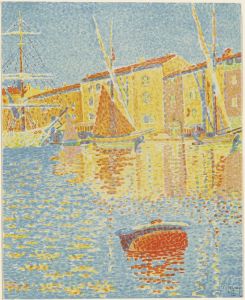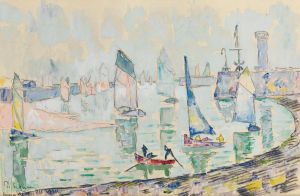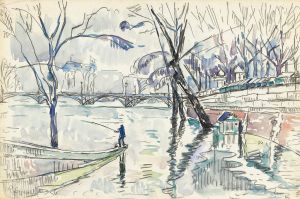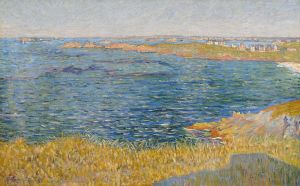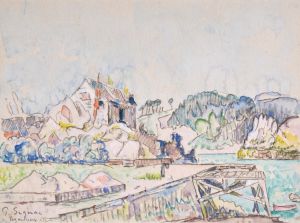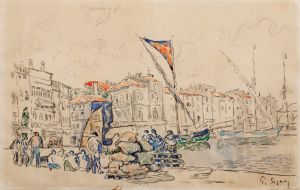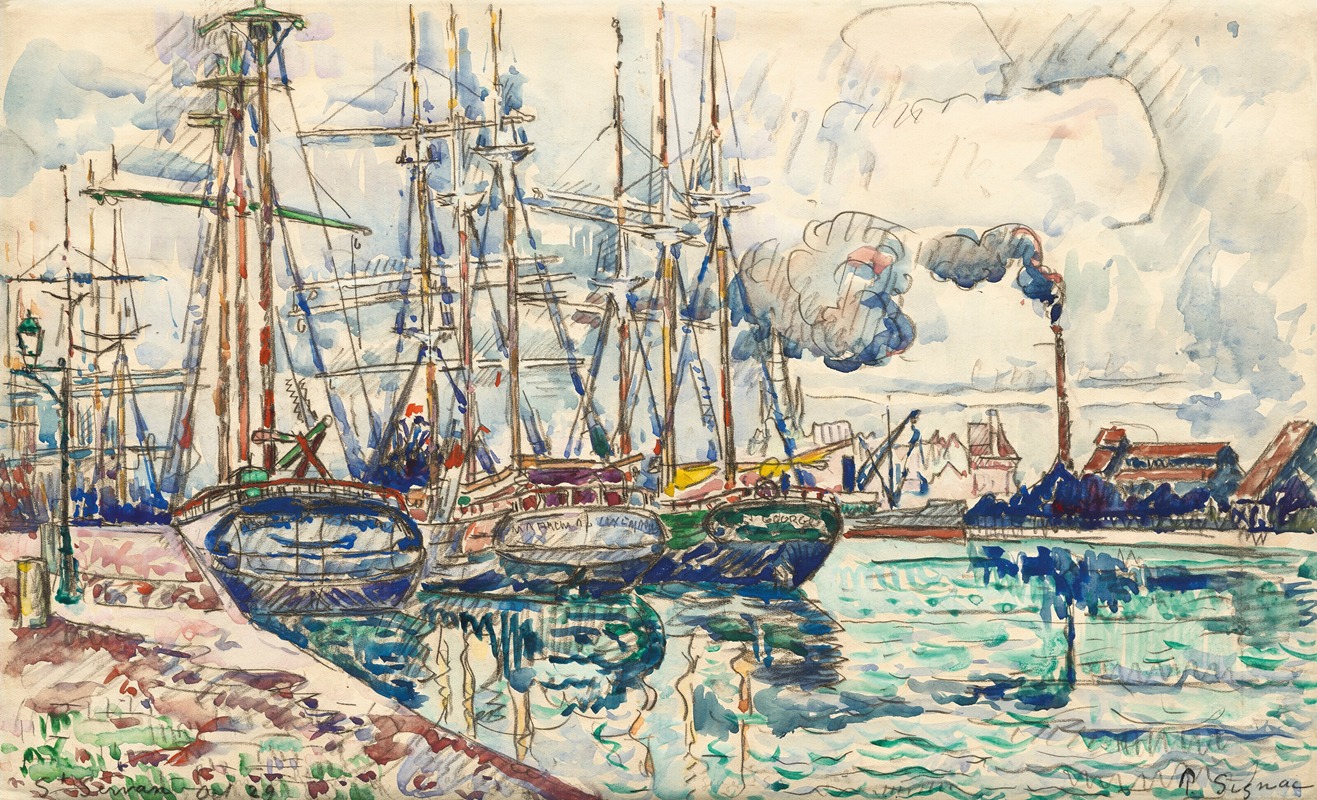
Saint-Servan
A hand-painted replica of Paul Signac’s masterpiece Saint-Servan, meticulously crafted by professional artists to capture the true essence of the original. Each piece is created with museum-quality canvas and rare mineral pigments, carefully painted by experienced artists with delicate brushstrokes and rich, layered colors to perfectly recreate the texture of the original artwork. Unlike machine-printed reproductions, this hand-painted version brings the painting to life, infused with the artist’s emotions and skill in every stroke. Whether for personal collection or home decoration, it instantly elevates the artistic atmosphere of any space.
Paul Signac's painting Saint-Servan is a notable example of the artist's work in the Neo-Impressionist style. Created in 1890, the painting depicts the coastal town of Saint-Servan, which is now part of the city of Saint-Malo in Brittany, France. Signac, a prominent figure in the Neo-Impressionist movement, was known for his use of the pointillist technique, a method of painting developed by Georges Seurat that involves applying small, distinct dots of color to form an image.
In Saint-Servan, Signac captures the serene atmosphere of the harbor with its boats, calm waters, and the surrounding architecture. The painting reflects his fascination with light, color, and the interplay of natural elements. Signac's use of vibrant, carefully placed dots of paint creates a harmonious composition that emphasizes the luminosity and vibrancy of the scene. The work exemplifies his commitment to the scientific principles of color theory, which were central to the Neo-Impressionist approach.
Paul Signac was deeply inspired by the landscapes and seascapes of France, particularly its coastal regions. His travels along the French coastline provided him with a wealth of subject matter, and his paintings often celebrate the beauty of maritime life. Saint-Servan is one such work that demonstrates his ability to convey the tranquility and charm of a specific locale while adhering to the innovative techniques of his artistic movement.
The painting is part of a broader body of work in which Signac explored the relationship between nature and human activity, particularly in port towns and fishing villages. His meticulous approach to composition and color placement reflects his dedication to the ideals of Neo-Impressionism, which sought to bring a scientific rigor to the art of painting while maintaining its emotional and aesthetic impact.
Today, Saint-Servan is recognized as an important piece within Signac's oeuvre and within the broader context of late 19th-century art. It serves as a testament to the artist's skill and his contribution to the development of modern painting. The painting is held in a private collection and has been exhibited in various galleries and museums, allowing audiences to appreciate its historical and artistic significance.





